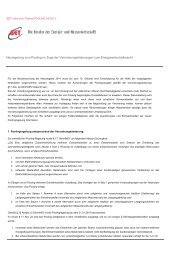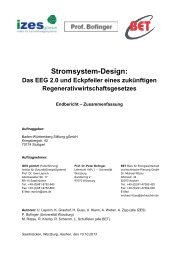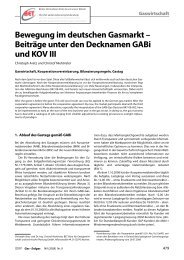You also want an ePaper? Increase the reach of your titles
YUMPU automatically turns print PDFs into web optimized ePapers that Google loves.
Twenty years of<br />
evolution<br />
in the <strong>Europe</strong>an power industry<br />
As <strong>POWER</strong>-<strong>GEN</strong> <strong>Europe</strong> celebrates its 20th anniversary, Nigel Blackaby, PennWell’s<br />
International Conference Director, considers the major trends shaping the <strong>Europe</strong>an power<br />
industry’s past, present and future.<br />
Signi�cant transformation has epitomized the power industry over the<br />
past two decades. Looking back, industry commentators agree the<br />
most signi�cant trend has been the industries shift from being largely<br />
state-owned, centrally-controlled and dominated by large integrated<br />
companies to that of a liberalized environment.<br />
Some would suggest that this has led to lower prices for the consumer<br />
and the introduction of e�ciencies into the marketplace. Others would<br />
argue that energy costs for consumers have actually risen, that there<br />
continues to be a lack of transparency and that wider market uncertainty<br />
still hampers investment in plant and infrastructure.<br />
Nevertheless, unbundling of generation, transmission, distribution<br />
and supply (retail), as well as the creation of energy trading markets<br />
has driven e�ciencies into the marketplace, primarily in respect of<br />
technology e�ciencies and lower wholesale prices via energy trading.<br />
Speci�cally, combined-cycle gas turbine generation has blossomed, with<br />
major advances in e�ciency and size.<br />
Meanwhile, the landmark Kyoto Agreement of 1997 and the EU 2020<br />
targets established in 2007/8 have driven a major and long-lasting shift<br />
in focus to addressing concerns around CO2 and greenhouse gas (GHG)<br />
emissions. Renewable energy legislation has been enacted in a number of<br />
<strong>Europe</strong>an countries, prompting an increase in the number of wood- and<br />
biomass-burning plants, as well as greater interest in carbon capture and<br />
storage (CCS) technology. There has also been the rapid development of<br />
solar and wind energy.<br />
Facing fresh challenges<br />
Major players are already moving to green energy and have accepted they<br />
must now build power plants on the basis of clean power. The utilities<br />
also recognize renewables, especially wind and solar, as being the way<br />
forward. However, regulatory boundaries continue to change in respect<br />
of GHG emission restrictions, rights and fees; the price and availability<br />
of fuels; and the opposing positions being taken on development of<br />
nuclear since Fukushima. There is also the challenge of integrating the<br />
increasing amount of renewables into the electricity system and the<br />
6 www.powergeneurope.com<br />
operational issues these create – from frequency and voltage stability to<br />
provision of reserve. Storage of energy and conversion from one type to<br />
another – e.g. wind to water storage, wind to hydrogen and electricity to<br />
heat – will therefore be hugely important.<br />
There is also the issue of expanding the grid and deploying new<br />
transmission lines to accommodate renewables, especially o�shore<br />
renewables that are located quite some distance from the grid load site.<br />
Obtaining the necessary permits and public acceptance is currently<br />
proving di�cult. Similarly, doubts persist as to whether CCS is a realistic<br />
option, given public opposition to transporting CO2 via pipeline and storing<br />
it underground. Using excess energy from solar or wind to transform CO2<br />
into methane provides a viable alternative. Meanwhile, �ue gas cleaning<br />
will remain an important aspect of the clean energy mix.<br />
A secure, sustainable and least-cost electricity system<br />
Certainly, deregulation, the green agenda and integration of renewables<br />
such as wind and solar into the electricity system bring fresh challenges,<br />
but they also create exciting new opportunities, as do increasingly rapid<br />
advances in plant, storage and smart grid technologies. Moving forward,<br />
the industry must look much more closely at the energy mix and other<br />
technologies to emerge. E�ectively, what’s needed is system �exibility in<br />
terms of both fuels and outputs.<br />
Moreover, both government and industry must work together to better<br />
communicate the need for technology development in general –<br />
including nuclear, shale gas, CCS and coal – to gain public acceptance<br />
of the necessity of these technologies to sustaining our way of life and<br />
preserving the planet.<br />
Against a backdrop of greater demand for energy from emerging markets<br />
and a gradual rise in economic activity globally, it is more important than<br />
ever that all stakeholders pull together to �nd a solution to delivering<br />
a secure, sustainable and least-cost electricity system. Ultimately, all<br />
investments in the power sector are long-term and will feed through to the<br />
consumer. Therefore clarity regarding long-term strategies of regulators<br />
together with improved transparency for consumers must be achieved.










